
How to Customize Magento 2 Transactional Emails
Need help communicating with customers for your business? Magento 2 transactional emails keep customers informed of their purchases throughout the journey.
In this tutorial, we will look at the types and best practices of Magento transactional emails.
Key Takeaways
- Types of Magento transactional emails and how they support customer communication.
- Best practices for customizing email templates in Magento for brand consistency.
- Importance of using an SMTP extension to improve email deliverability and security.
- Steps to ensure emails render correctly across different email clients.
- Monitoring and optimizing email performance using analytics tools.
What are Magento Transactional Emails?
Transactional emails are an essential part of any e-commerce platform. They are automated emails sent to customers during various stages of their purchase journey. These stages are:
- Order Confirmation: This is typically the first email a customer receives after making a purchase.
- Shipping: Once the order is packaged and ready to be sent, a shipping confirmation email is triggered.
- Invoice Generation: This email is sent when an invoice is created for the order. It provides a detailed breakdown of the charges.
- Special Events: These are customizable emails that can be triggered by various events specific to your business.
Special events trigger these emails and can be customized for your business as well.
How Do Magento 2 Transactional Emails Work?
1. Event Trigger
Magento uses an event-driven architecture. It is where specific actions within the system trigger various events. For transactional emails, these events are important. Some common events that trigger transactional emails include:
-
Order placement (new order confirmation)
2. Order shipment (shipping confirmation)
3. Customer registration (welcome email)
4. Password reset requests
5. Product back-in-stock notifications
6. Abandoned cart reminders
2. Email Template
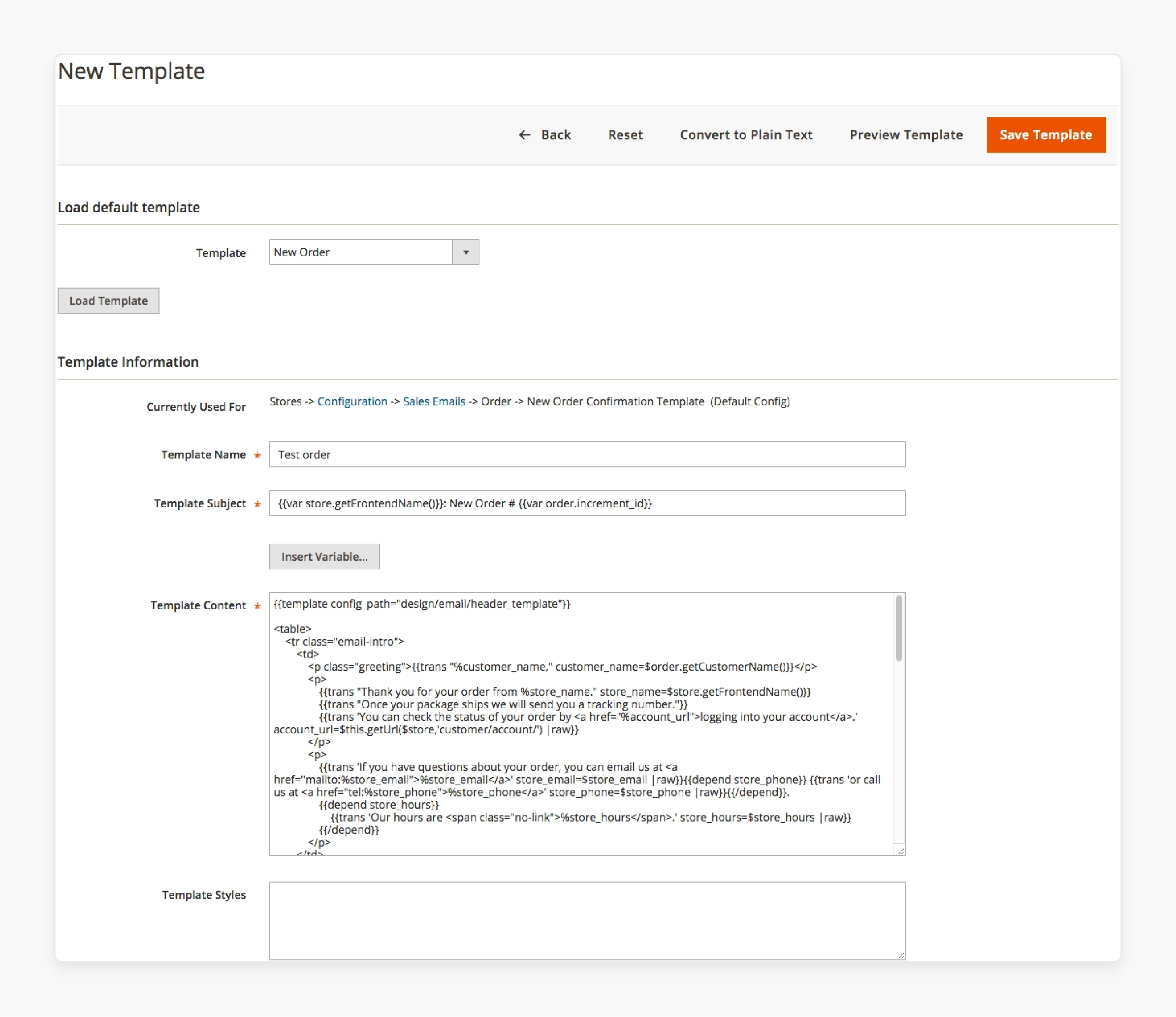
Magento uses a template system for its transactional emails. These templates are typically HTML-based and include both static content and dynamic variables. Key aspects of email templates include:
-
Variables: Placeholders that get replaced with actual data when the email is sent (e.g.,
{{var customer.name}}for the customer's name)
2. Template styles: CSS styling to ensure the email looks good across different email clients
3. Localization: Templates can be created for different languages and store views
4. Customization: Store owners can modify these templates through the Magento admin panel. Or they can do it by overriding them in their custom theme.
3. Email Configuration
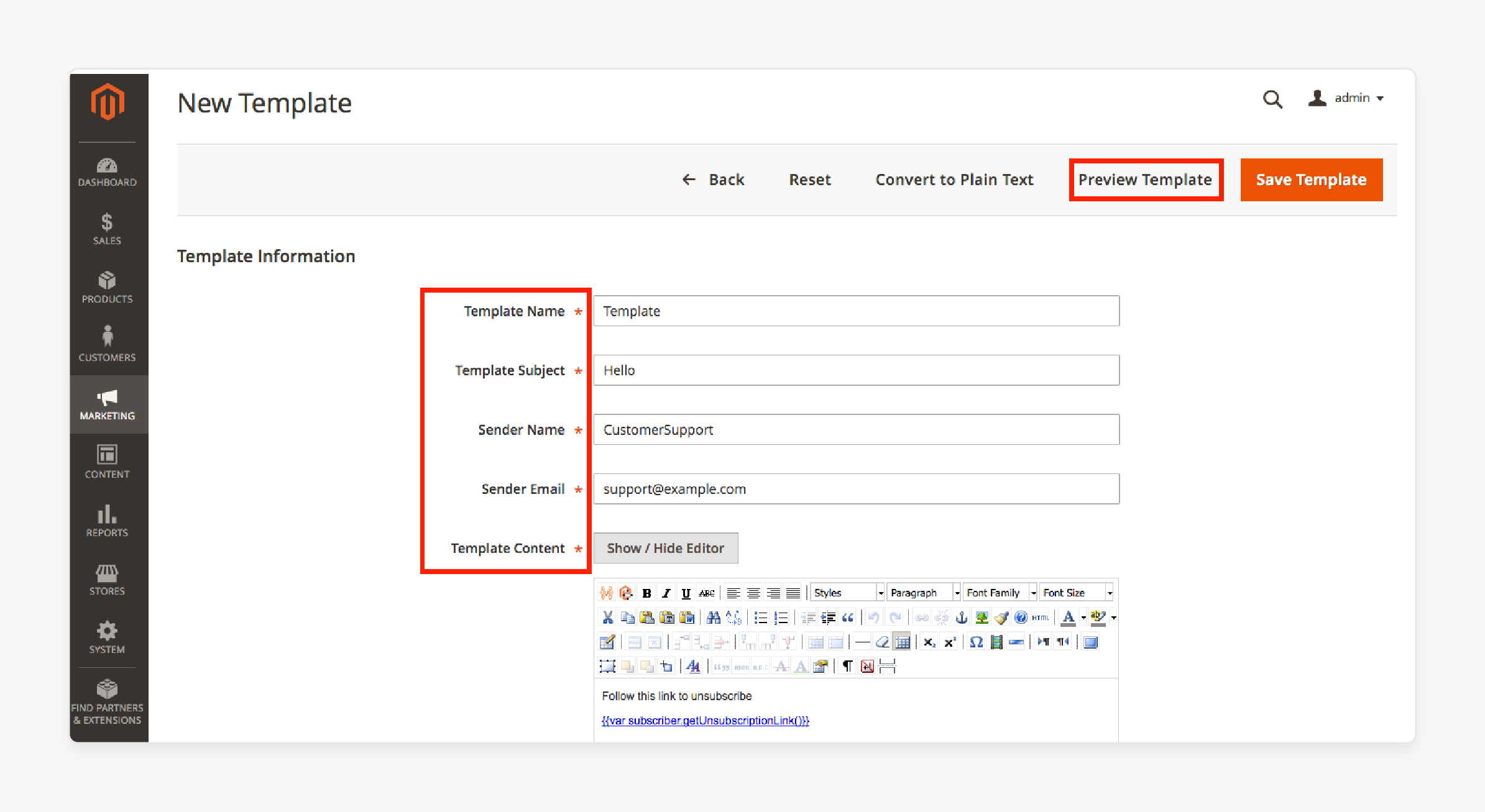
The email configuration in Magento is highly customizable and includes several important settings:
-
Sender Information: You can set up different sender identities for various types of emails. These include general contact, sales representative, and customer support.
2. Transactional Email Templates: Each type of email can be associated with a specific template.
3. Send To: Determines the recipient of the email. It is usually the customer's email address, but can include CC and BCC fields for certain emails.
4. Email Subject: Can be customized and may include variables for personalization.
5. Store View Specific Settings: Allows for different configurations. It is based on different store views or websites within a Magento installation.
4. SMTP Configuration
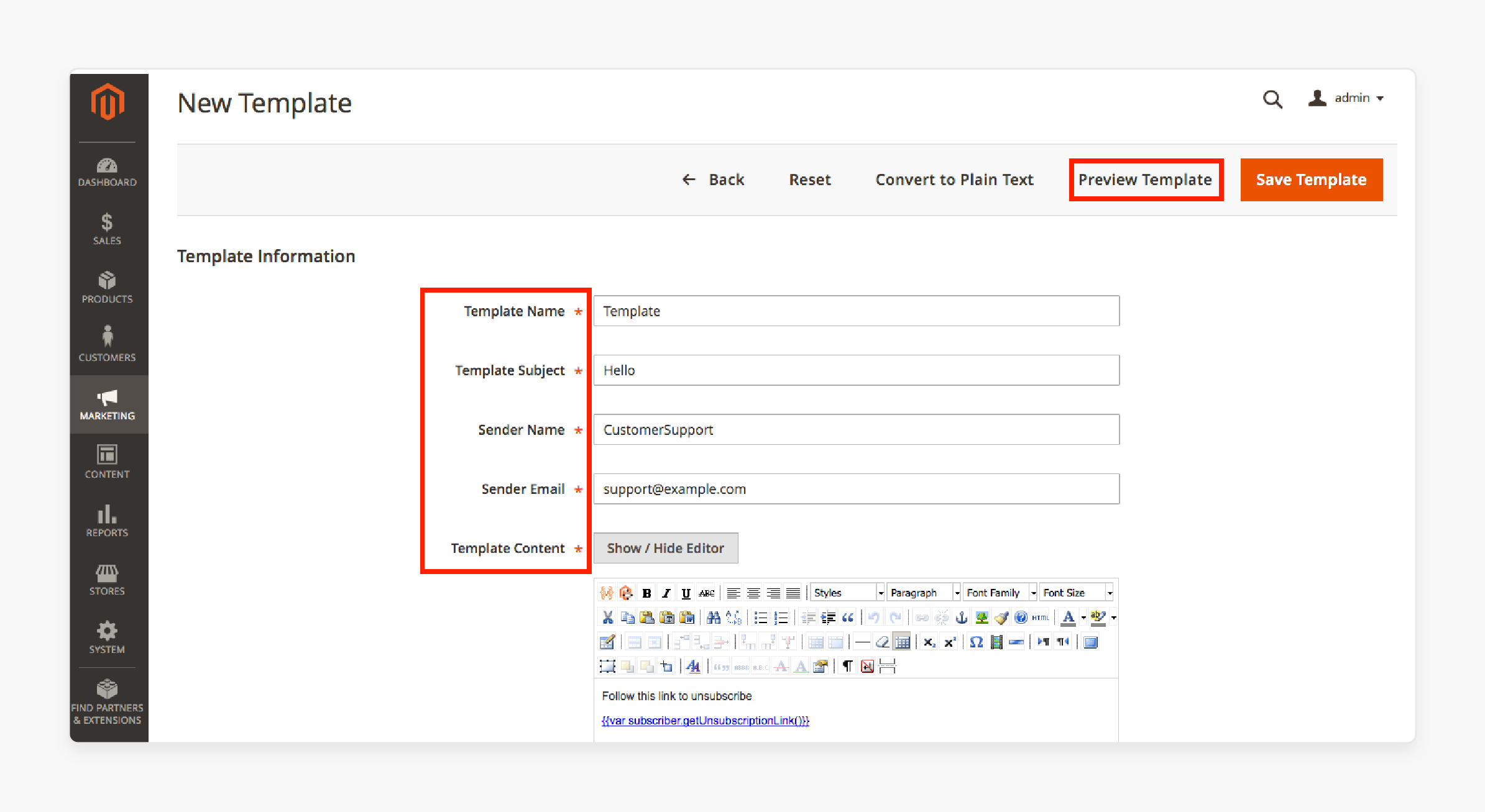
- By default, Magento uses the PHP mail function to send transactional emails. However, this can lead to deliverability issues and security concerns. To improve this, it's recommended to use a third-party SMTP extension.
- Using a third-party extension offers several benefits:
- Improved deliverability: Proper authentication reduces the chance of emails being marked as spam
- Better security: It uses encryption (SSL/TLS) to protect email content during transmission. It prevents unauthorized access to sensitive customer information during transit.
- Enhanced tracking: Many SMTP services provide detailed analytics on email delivery and open rates
- Rate limiting: Helps prevent your server from being blacklisted due to sending too many emails at once
5. Email Queue
Magento uses an email queue to manage the sending of transactional emails asynchronously. This feature optimizes email delivery and enhances efficiency. It does this by allowing emails to be sent in batches rather than individually.
-
Asynchronous Processing: Emails are added to a queue for faster processing and accuracy.
2. Cron Job: A scheduled task (cron job) processes the email queue at regular intervals, sending emails in batches
3. Retry Mechanism: If an email fails to send, it can be retried automatically, improving the chances of successful delivery
4. Queue Management: Administrators can view and manage the email queue through the Magento admin panel. It allows for troubleshooting and manual intervention if necessary.
Types of Transactional Emails for Magento 2
| Type of Email | Description | Essential Details |
|---|---|---|
| Order Confirmation Email | The email is sent immediately after a customer places an order. It confirms the purchase and provides order details. | - Order number - Order date and time - An itemized list of products with prices - Subtotal, taxes, shipping costs - Payment method used |
| Shipping Confirmation Email | It is sent when the order is shipped. The email informs the customer that their purchase is on its way. | - Order number - Shipping date - Shipping carrier name - Tracking number (with a clickable link) - Estimated delivery date - Shipped items list - Shipping address |
| Invoice Email | It is sent when an invoice is generated for the order. Provides a detailed breakdown of charges. | - Invoice number - Invoice date - Order number (for reference) - Payment details (method, amount paid) - Due date (if applicable) - Total cost breakdown |
| Credit Memo Email | Sent when a credit memo (refund document) is generated. It contains details of the refund process. | - Credit memo number - Credit memo date - Order number (for reference) - Reason for refund - list of refunded products method - Total refund amount |
| Password Reset Email | It is sent when a customer requests a password reset. Provides instructions and a secure link for password options. | - Secure password reset link - Reset instructions - Link expiration time - Security tips - Customer support contact |
Steps to Customize the Magento Transactional Emails Template Extension
Step 1: Customize General Settings
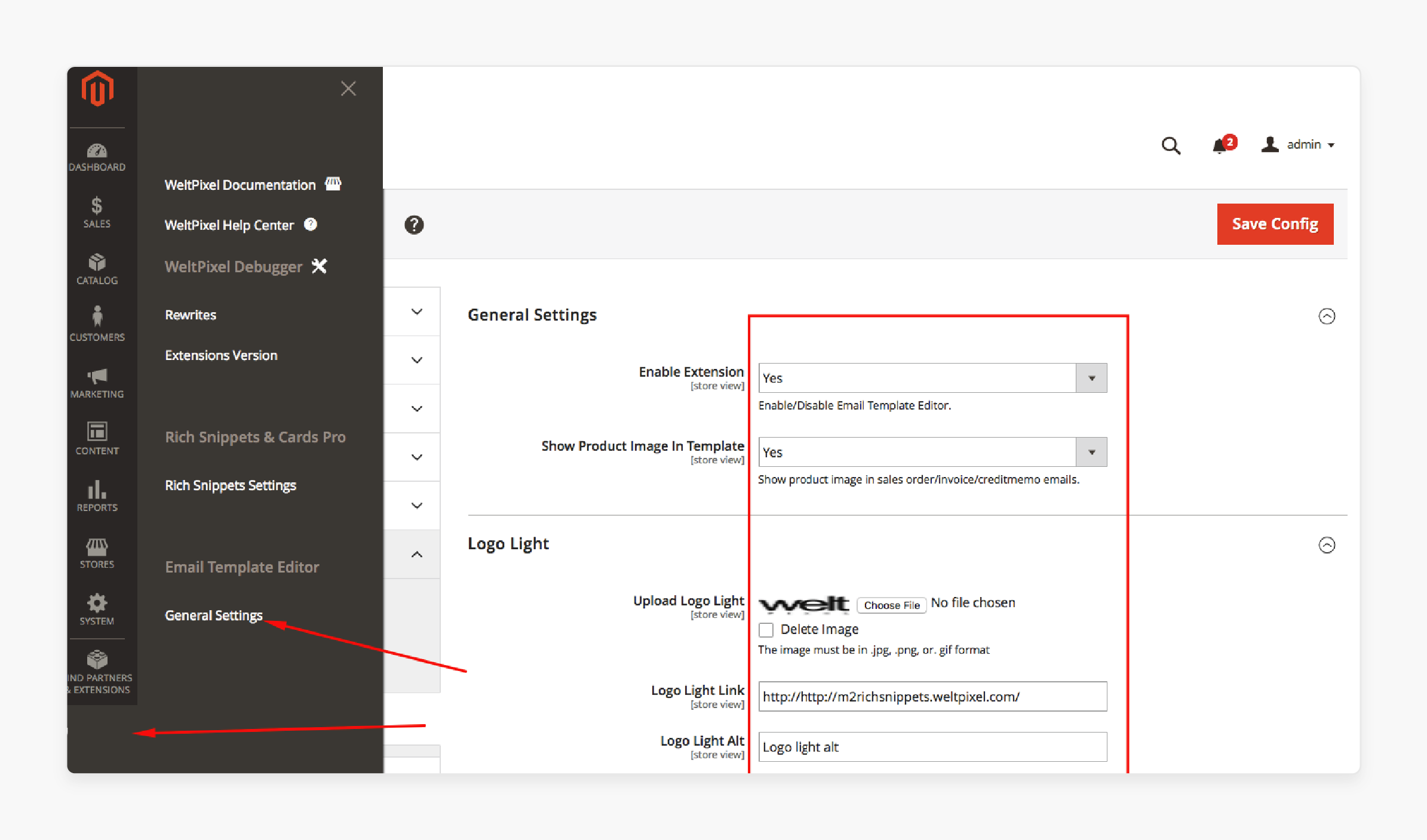
-
Log in to the Magento admin panel after installing the extension.
-
Go to Stores > Configuration > Magento transactional email extension > General.
-
Enable the extension and add product and logo images.
-
Navigate to Communications > Email Templates to add a new template.
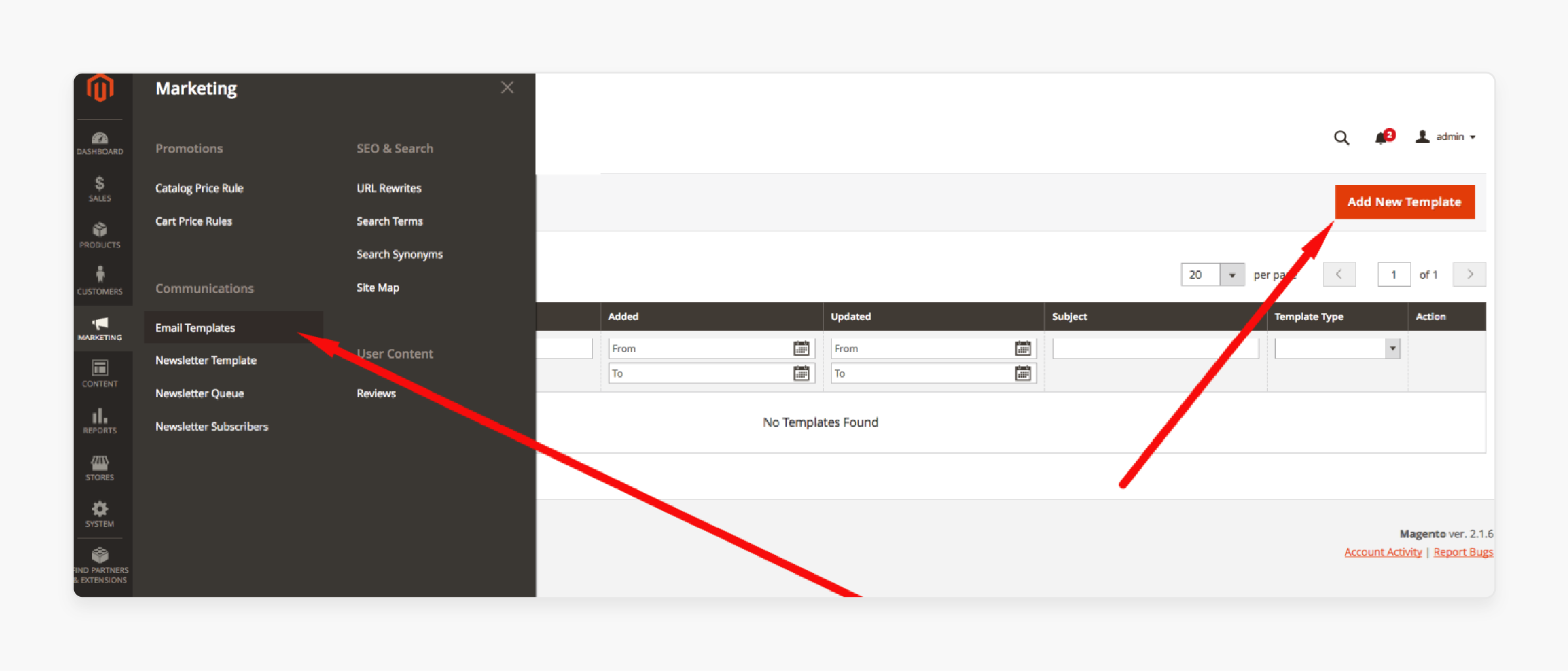
- Edit the template subject and first line.
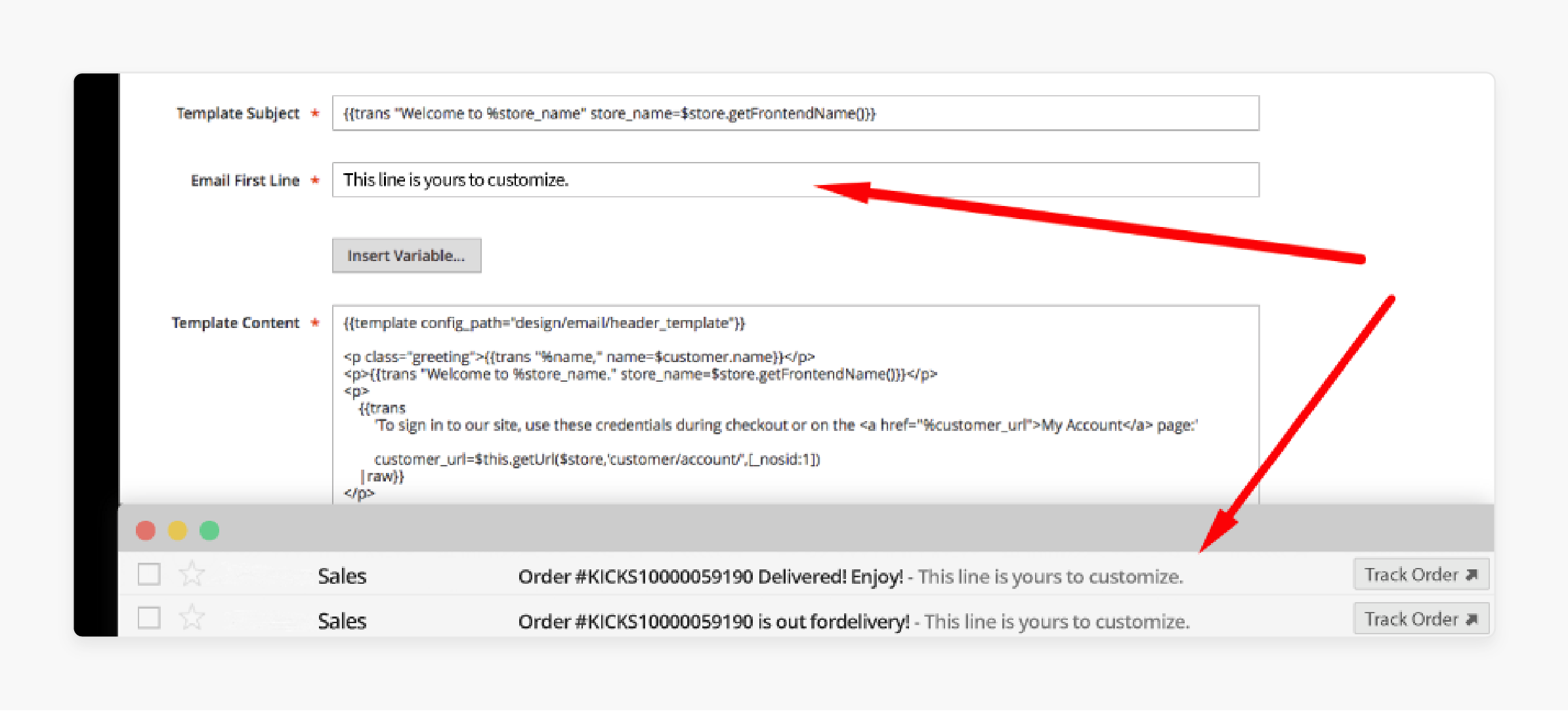
Step 2: Edit the transactional email
- Expand the Sales Emails section to edit the template.
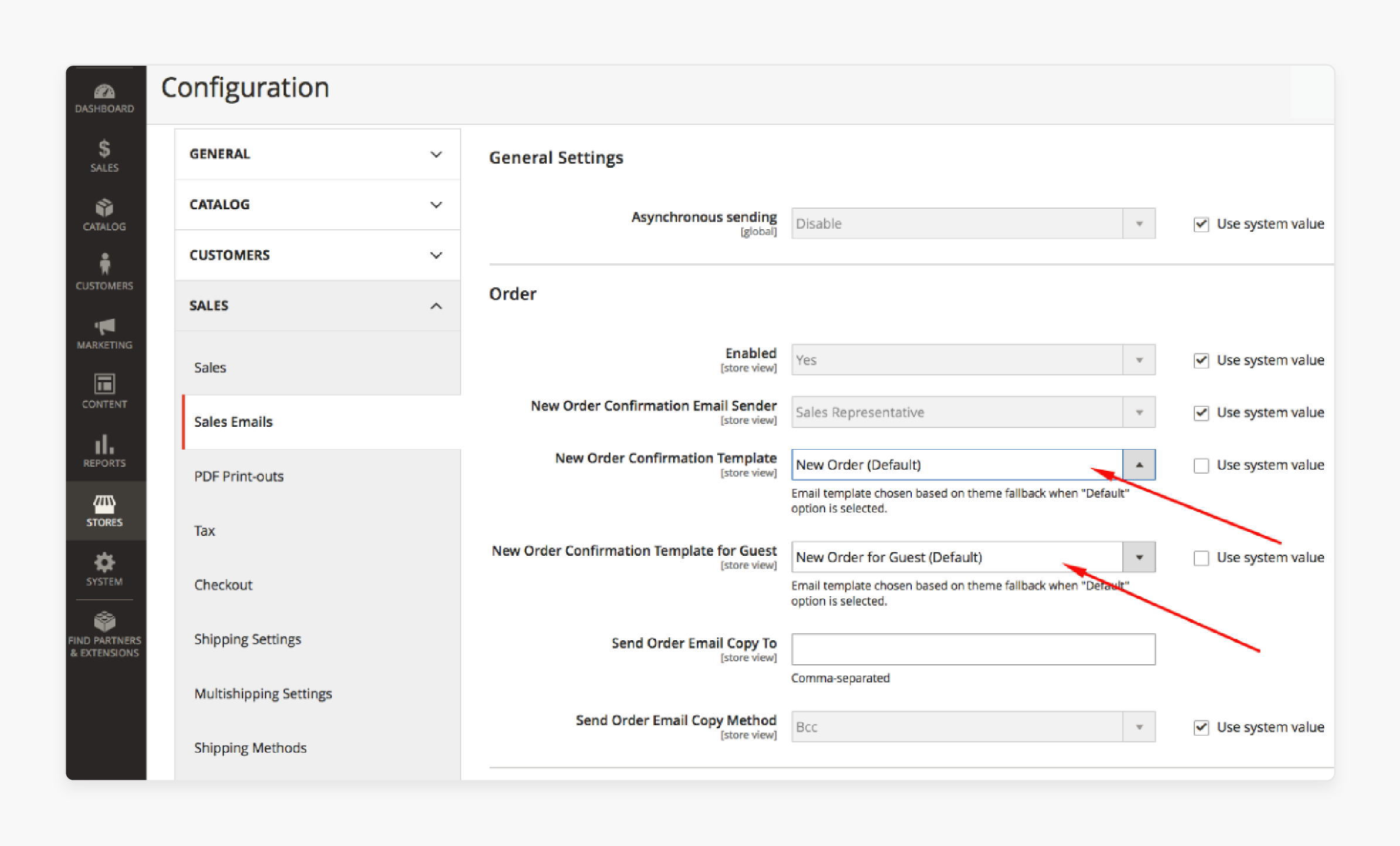
- Choose the New order confirmation email template, Sender, and Guest.
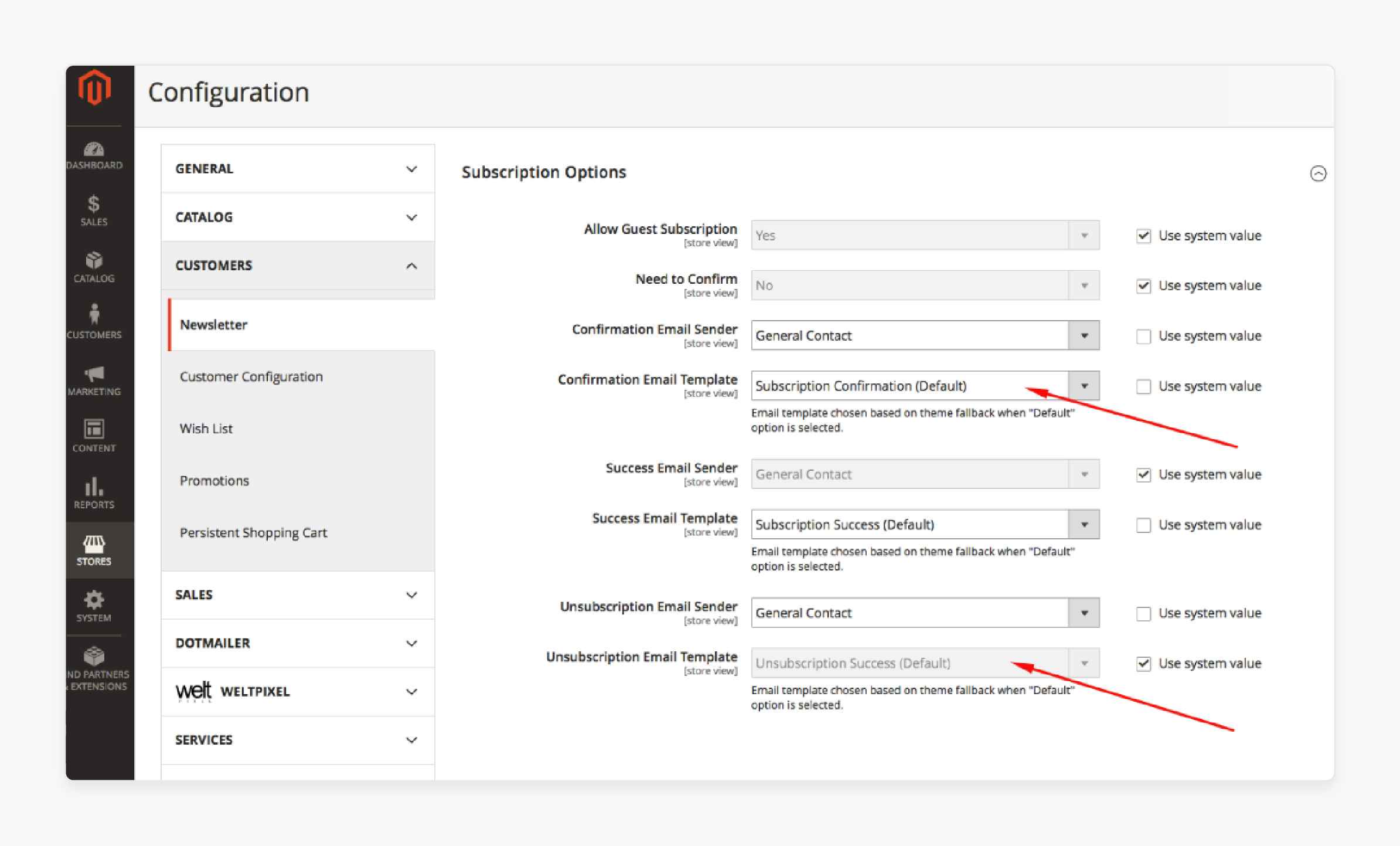
- Enter an email ID to send the order email copy.
- Click on Save Config to save changes.
- Expand the Customer Configuration section.
- Choose a Welcome Email Template for customers.
Best Practices for Magento Transactional Emails
1. Include Essential Information
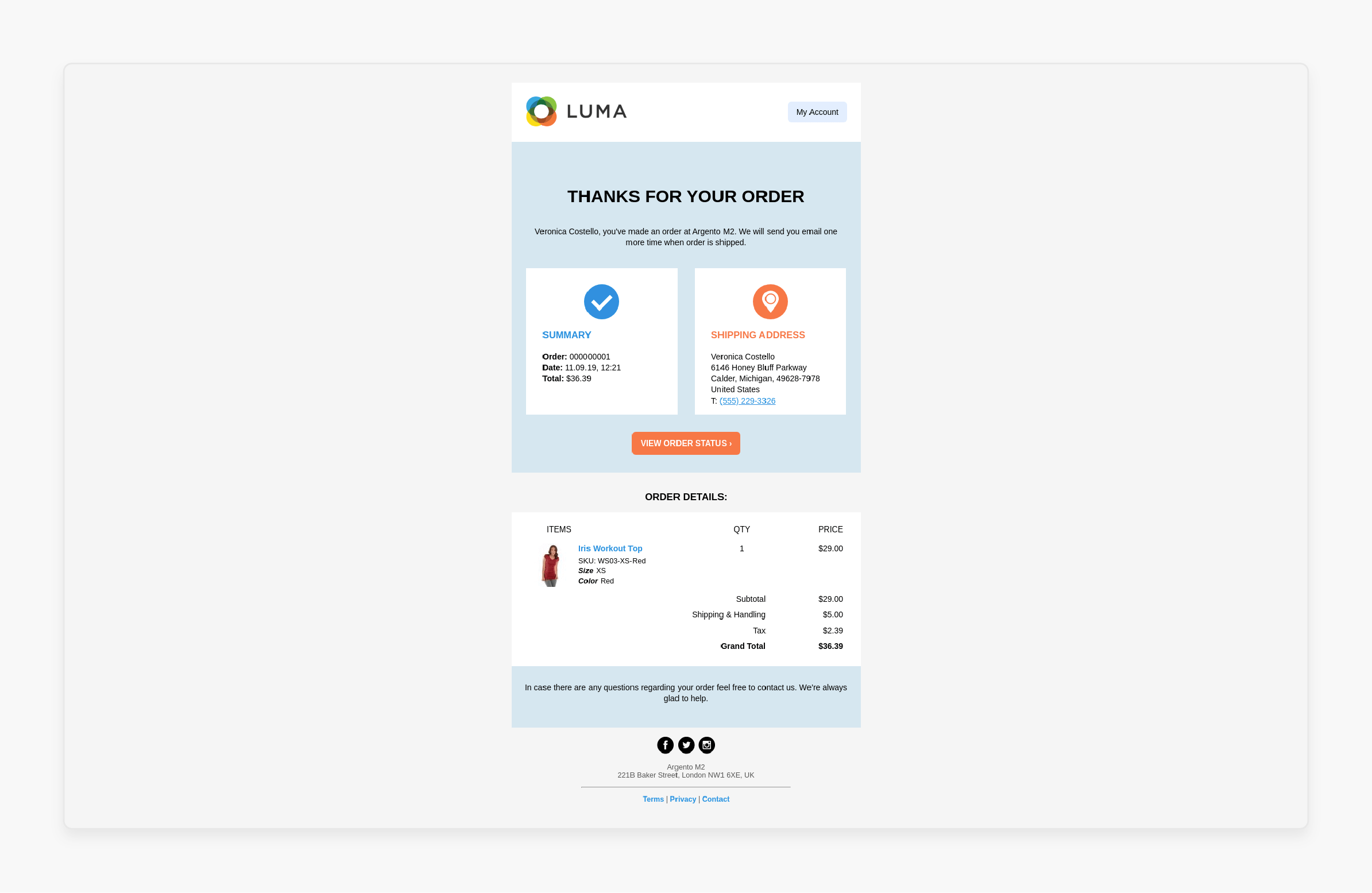
- Each type of email serves a specific purpose and should contain relevant details. Order confirmation emails must provide a summary of the transaction. They should clearly state the order number for easy reference.
- Shipping confirmation emails focus on the delivery process. They must include tracking information, typically a tracking number and a link to the carrier's website. The expected delivery date helps customers plan for the package's arrival.
- Password reset emails require a different approach. They should provide clear instructions on how to reset the password. A prominent and easily clickable reset link is essential for user convenience. This link should be secure and time-limited to prevent misuse.
2. Footer Information
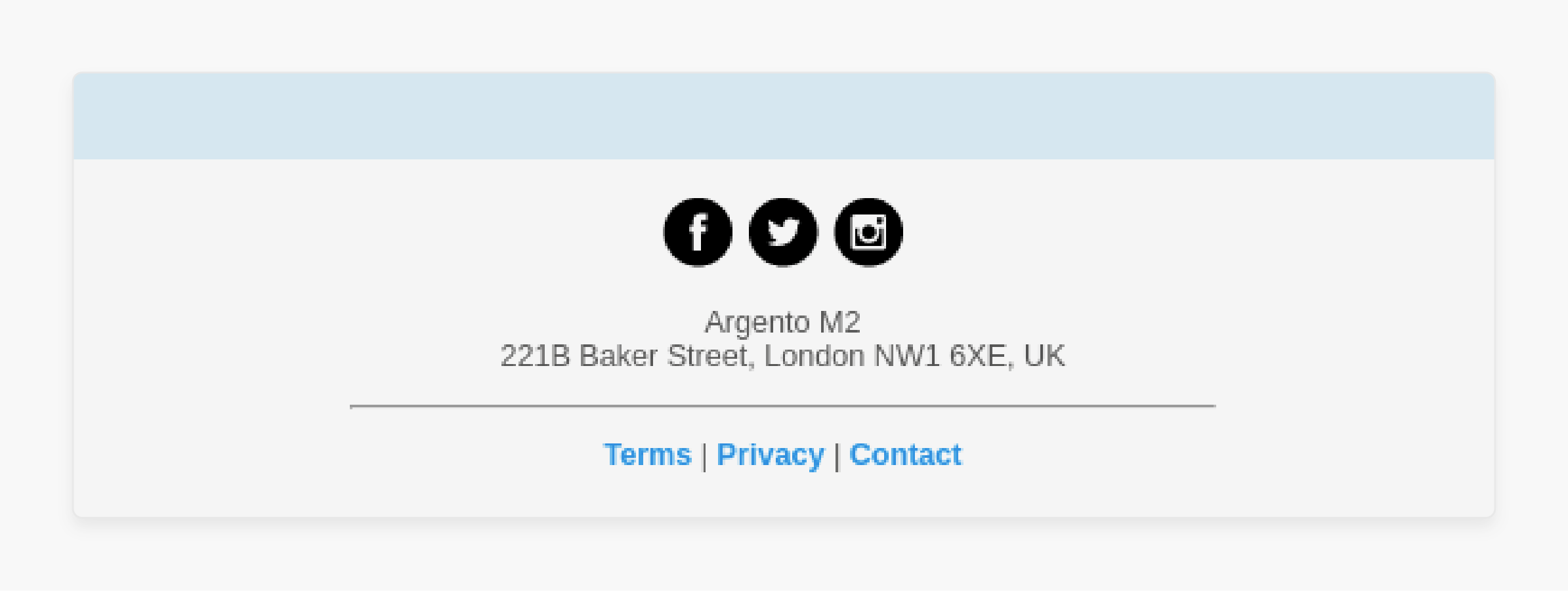
- Footer information in transactional emails serves purposes beyond the primary message. Unsubscribe options are essential, even in transactional emails. They demonstrate respect for recipient preferences. They also comply with anti-spam regulations in many jurisdictions.
- Privacy policy and terms of service links build trust. They provide transparency about data handling and usage. These links allow customers to access important legal information easily.
- Customer support contact details are vital for user assistance. They can include email addresses, phone numbers, or links to support portals. This information encourages customer engagement. It shows that help is readily available if needed.
- A well-designed footer can also reinforce brand identity. It may include social media links to boost engagement across platforms. Some businesses add brief company information or taglines in the footer. It reinforces brand recognition. The footer should be visually distinct but not overpowering.
3. Optimize for Different Email Clients
-
Email rendering can vary across platforms. Gmail, Outlook, and Apple Mail all have unique quirks. Testing across multiple clients is essential. It helps identify and resolve rendering issues. Use email testing tools like Stripo and Mailtrap to streamline this process. For example:
- Design your email template in Magento
- Send a test email to an email tool inbox
- Use the tool’s preview feature to see how the email renders in different clients
- Identify any issues (e.g., broken layouts in Outlook)
- Adjust your template's HTML/CSS
- Repeat the process until the email looks good across all clients
- They can show previews across various clients and devices.
- Inline CSS is a key technique for consistent styling for developers. Many email clients strip out or ignore header and external CSS. Inline styles ensure your design remains intact. However, be cautious with CSS usage. Complex CSS properties only work sometimes. Background images can be problematic for some clients. They might not display at all, breaking your Magento design configuration.
- Stick to simpler, more widely supported CSS properties. Use table-based layouts for better compatibility. They're more reliable across different email clients.
- Avoid JavaScript entirely, as most clients block it. Use system fonts or web-safe fonts to ensure text displays correctly. Keep your design responsive but simple. Complex responsive designs can fail in some clients.
4. Monitor Delivery & Open Rates
- Delivery rates indicate whether emails reach recipients' inboxes. Low delivery rates may signal issues with your sender's reputation or problems with email content, triggering spam filters. Open rates show how many recipients actually view your emails. Low open rates suggest unappealing subject lines or poor timing.
- Use email analytics tools to track these metrics. Many ESP (Email Service Provider) platforms offer built-in analytics. Look for patterns in delivery and open rates across different email types. Compare rates for order confirmations, shipping notifications, and password resets. Time of day can impact open rates significantly. Experiment with sending times to find optimal engagement periods.
- Personalization can often boost open rates. Keep an eye on email client usage among your recipients. It can inform design decisions for better rendering. Set up alerts for sudden drops in delivery or open rates.
FAQs
1. How can I ensure my Magento 2 transactional emails reach the inbox and not the spam folder?
To ensure your Magento 2 transactional emails avoid the spam folder, use an SMTP extension, authenticate your domain, and maintain a clean sender reputation. Proper configuration and monitoring are key to successful email delivery.
2. How do I customize transactional email templates in Magento?
To customize your Magento transactional email templates, go to the Magento backend. Navigate to Stores > Configuration, and then find the heading for Email Templates in Magento. Here, you can create a new template or modify an existing template by editing the header, footer, and content to match your brand's style.
3. Why should I use an SMTP extension for sending emails in Magento?
Using an SMTP extension for sending emails in Magento ensures better deliverability. It also ensures enhanced security and compatibility with various email clients. The default Magento PHP mail function can lead to issues like emails being marked as spam. SMTP helps prevent these issues, ensuring your emails reach your customers.
4. What are the best practices for creating responsive email templates in Magento?
When creating responsive email templates in Magento, make use of inline CSS. Test across various email clients and ensure your design is simple yet effective. Avoid using complex CSS or JavaScript. Stick to fonts and Magento layouts that are user-friendly and compatible with most platforms.
5. How can I track the performance of transactional emails in Magento?
To track the performance, integrate 3rd party analytics tools for Adobe Commerce. It allows you to monitor metrics such as delivery rates, open rates, and click-through rates, providing insights. These insights are into how your emails are performing and how you can optimize them for better results.
Summary
Magento 2 transactional emails help inform customers about the status and arrival of their products. In this tutorial, we explored the benefits and types of transactional emails for Magento stores. Here is a quick recap:
- Magento transactional emails keep customers informed at key stages.
- Customizable templates ensure emails match your brand.
- Using SMTP improves email security and deliverability.
- Responsive designs and testing enhance email compatibility.
- Tracking email performance helps optimize customer communication.
Choose managed Magento hosting to scale and grow your store with transactional email options.






